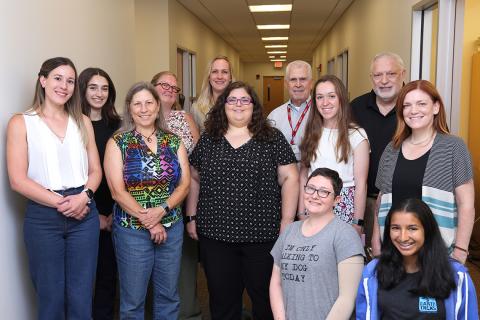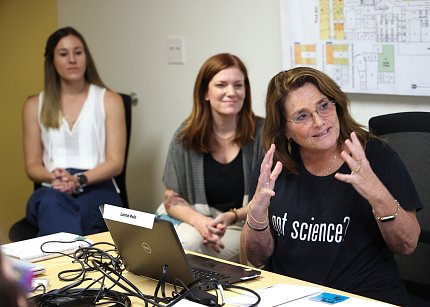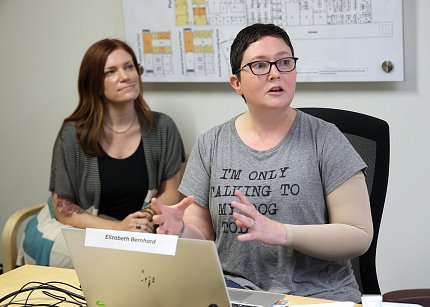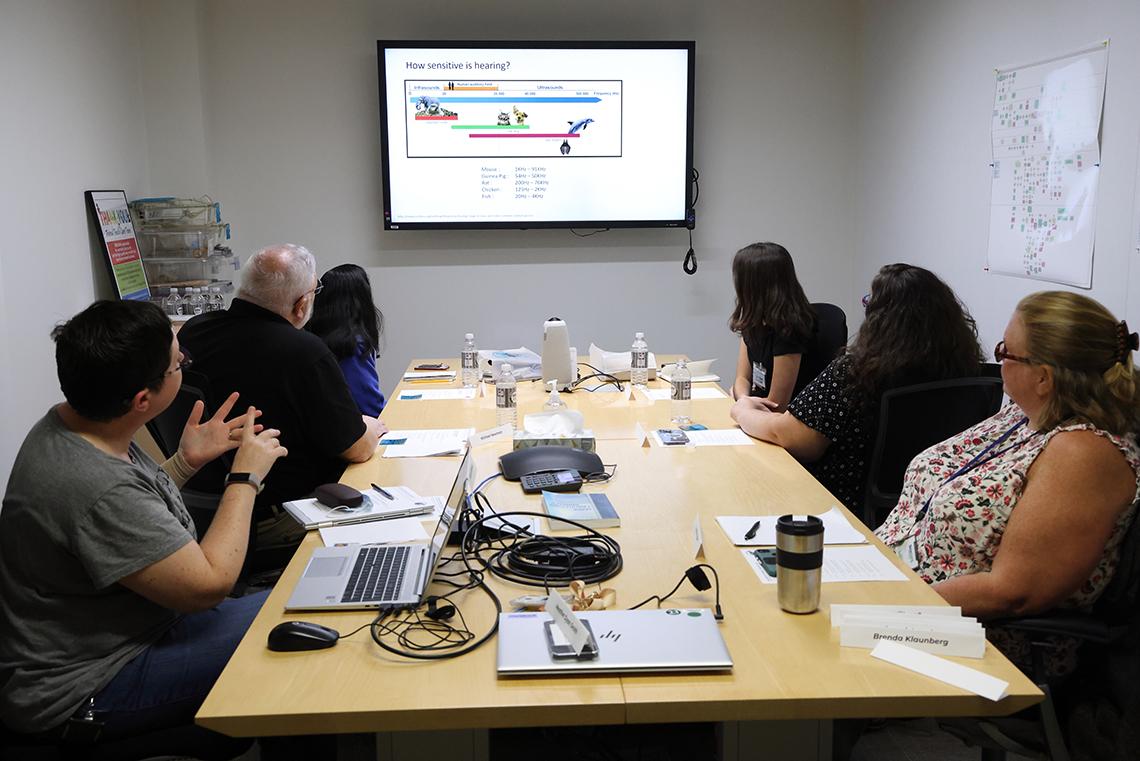Curious About Science Writing
Students Visit with OACU

Photo: Chia-Chi Charlie Chang
NIH’s Office of Animal Care and Use (OACU) opened its doors to two high school science writers on July 13. Tara Prakash and Nora Pierce are participants in Curious Science Writers (cSw), a program hosted by Americans for Medical Progress (AMP) that pairs high school students with mentors as the aspiring scribes research and write their own articles.
Students in the program had the opportunity to attend site visits at other locations, but these local Bethesda students were treated to a day of educational lectures culminating in a facility tour. The focus of the day? The whys and wherefores of animal-based research at NIH.
Lecturers from several institutes in the Bldg. 35 Shared Animal Facility spoke to the students about NIH research and the roles animals play in it, and the importance of communicating research to the public. The event also featured presentations from NIH science writers.

Photo: Chia-Chi Charlie Chang
“Science isn’t finished until it’s communicated,” emphasized Dr. Nina Lichtenberg, a science writer at the National Institute of Neurological Disorders and Stroke (NINDS).
Students also heard from event organizer and OACU Associate Director Heather Smith; Dr. Heather Narver, NINDS animal program director; Ed Czarra, NINDS animal resources program administrator; Dr. Brenda Klaunberg, NINDS animal imaging program director; NIDCD biologist Liz Bernhard; and Dr. Lorna Role, NINDS senior investigator and former scientific director of the institute.
“It was so cool to see a selection of the different research opportunities at NIH!” Prakash, who attends Sidwell Friends, enthused. “I didn’t realize people of so many backgrounds and experiences could work together in the same institute.”

Photo: Chia-Chi Charlie Chang
The students were also impressed to both learn about and observe the standard of care for research animals at NIH. The presenters “showed a genuine respect and attention to detail for…the animals in their care,” Pierce, who attends Montgomery Blair High School, observed.
Role, a senior investigator in NINDS’s circuits, synapses and molecular signaling section, shared how she learned on the fly to engage with the media after news of her lab’s research paper on the mechanisms of nicotine addiction went “old-school viral” in 1995.
“Tell [your audience] what you’re going to tell them, then [actually] tell them and then tell them what you told them,” she advised. “Clarity matters a lot.”
Even with the diversity of expertise in the speakers, everyone agreed on the importance of clear, accessible science communication.
“Now it’s up to you, cSw,” said Role.

Photo: Chia-Chi Charlie Chang
